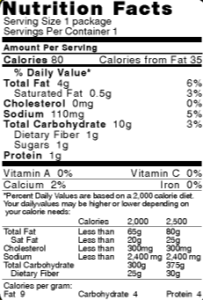Ask Mr. Pedometer and Friends…
July 2019
Q: Mr. Pedometer, with each passing year, I seem to be adding to my padding…particularly in my middle. Do you have suggestions for how to reduce belly fat?
A: You certainly are not alone in the so-called “battle of the bulge!” Extra padding around your midsection could increase your risk of health problems, including heart disease and diabetes.
As you undoubtedly know, all physical activity will burn fuel in the muscles. Sometimes that fuel is converted fat, which will result in fat and weight loss, if not replaced in our nutrition plans. Remember, Energy Balance means consumption and use of calories are equal. To lose fat, Energy Balance has to be negative (more activity than eating, to simplify it).
The caveat: When Energy Balance is negative and we burn fat in the muscles, we can’t direct where that fat comes from. If we have enough negative energy balance days that significant fat is burned as fuel, belly fat should be reduced, also.
A recent article in parade.com had the following suggestions for winning the “battle of the bulge”:
-
TAKE A NATURE BREAK – “According to a new study published in the journal Frontiers in Psychology, strolling or sitting for 20 minutes in nature significantly lowers cortisol levels and help reduce belly fat. High levels of cortisol, a stress hormone, stimulate production of glucose, which – if it’s not used as energy – is converted into fat that’s stored in your midsection.”
-
STAND UP – “The more time people spend sitting down during the day, the more abdominal fat they had, according to a recent study published in the journal Obesity….The link was strongest for those who didn’t get the recommended weekly 150 minutes of moderate-intensity physical activity.” Standing while working for part of your day will help reduce belly fat.
-
EXERCISE IN INTERVALS – “While any type of  cardio will burn fat, research shows you’re more likely to trim your tummy doing high-intensity interval training (HIIT), a type of workout where you alternate exerting maximum effort through quick, intense bursts of exercise with short, active recovery periods, says Wayne Westcott, PhD, professor of exercise science at Quincy College in Quincy, Massachusetts. In one study, people who did two traditional ‘steady-state’ workouts and two HIIT workouts a week lost more weight overall and significantly more inches from their waistline, compared to the group that did only steady-state routines.”
cardio will burn fat, research shows you’re more likely to trim your tummy doing high-intensity interval training (HIIT), a type of workout where you alternate exerting maximum effort through quick, intense bursts of exercise with short, active recovery periods, says Wayne Westcott, PhD, professor of exercise science at Quincy College in Quincy, Massachusetts. In one study, people who did two traditional ‘steady-state’ workouts and two HIIT workouts a week lost more weight overall and significantly more inches from their waistline, compared to the group that did only steady-state routines.”
-
EAT MORE PULSES – “The umbrella term for beans, lentils, peas and chickpeas, pulses have been shown to reduce body fat. Regular eaters have smaller waist measurements and overall 20 percent lower risk of obesity, says Cynthia Sass, RD.”
-
START STRENGTH TRAINING – At any age, adding weights to your workout can help you manage (and reduce belly fat) your middle, Westcott reports…To gain muscle, Westcott recommends strength training at least twice a week.”
-
CHECK YOUR VITAMIN D LEVELS – “Higher levels of body fat are associated with lower vitamin D levels in people who are overweight, according to a recent study in the Netherlands….You can boost levels naturally by eating more fatty fish like salmon and eating D-fortified dairy products, orange juice or cereal.”
Try any or all of these techniques to keep help to reduce belly fat and “adding to your padding.”
EAT RIGHT, MOVE MORE, AND SLEEP WELL TO BE WELL.

 “Fill a pitcher or large water bottle with water each morning and aim to finish it off by bedtime will help you stay hydrated. If plain water is unappealing,“Add a splash of 100 percent fruit juice to a glassful” “Or chop up strawberries, melon, cucumber and orange, mint or other flavorful items and mix into a pitcher of water.
“Fill a pitcher or large water bottle with water each morning and aim to finish it off by bedtime will help you stay hydrated. If plain water is unappealing,“Add a splash of 100 percent fruit juice to a glassful” “Or chop up strawberries, melon, cucumber and orange, mint or other flavorful items and mix into a pitcher of water.



